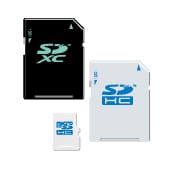FAQ
- Is there an End User License Agreement (EULA)?
- What is the SD Memory Card Formatter Version Check?
- How many characters can be entered into the volume label field?
- What is the difference between Quick and Overwrite format methods?
- What types of adapter are supported by the SD Memory Card Formatter?
- I’m having issues running the formatting tool from external storage device
- Why is my SDUC or microSDUC card not being recognized and not operating normally in my product?
- Who can I contact with questions about the SDA SD Memory Card Formatter?
Is there an End User License Agreement (EULA)?
When downloading SD Memory Card Formatter for Linux from SDA Download site, the EULA will be shown on the screen. The EULA is the SD Memory Card Formatter software license agreement between SDA and you. You must accept the EULA to install and use the Formatter.
What is the SD Memory Card Formatter Version Check?
If your Linux PC is connecting to Internet, when you run the SD Memory Card Formatter on your Linux PC with –update-check option, it will check for the latest version of the Formatter in the SDA website. If your Formatter is not the latest version, the Formatter will ask you to upgrade by downloading the latest version from the SDA website.
How many characters can be entered into the volume label field?
You can enter 11 ASCII characters or 5 characters in Japanese double-byte character. On Linux, in order to use Japanese characters, please use –code-page 932
What is the difference between Quick and Overwrite format methods?
Quick format deletes all the file/directory entries by initializing file system parameters of the card, but it does not delete the data written in files. Overwrite format deletes file/directory entries by initializing file system parameters of the card (same as with Quick format), and erases all data by overwriting the user data area completely. The Overwrite format takes more time to complete than the Quick format method.
What types of adapter are supported by the SD Memory Card Formatter?
The following SD interface devices are available to access SD/SDHC/SDXC memory cards:
- SD memory card slot on Windows PC, Mac or Linux
- USB2.0, USB3.0, USB3.1, USB-C SD Memory card reader connecting to Windows PC, Mac or Linux
I’m having issues running the formatting tool from external storage device
By default, some Linux distributions mount external storage devices, especially formatted to FAT, without execution privileges as a security measure. If you encounter issues, we recommend moving the formatting tool to system partition.
Why is my SDUC or microSDUC card not being recognized and not operating normally in my product?
The Formatter was updated to format SDUC memory cards (cards over 2TB of capacity). SDUC memory cards use an enhanced SD protocol that requires updated SD drivers in many host products. Therefore, if you encounter any issues with your SDUC memory card operation, make sure to update your product’s drivers to the latest version supporting SDUC.
Who can I contact with questions about the SDA SD Memory Card Formatter?
If you have questions about the SD Memory Card Formatter or want to learn more about how you can point partners, consumers and customers to our trusted resources, please email the SDA team members at help@sdcard.org



